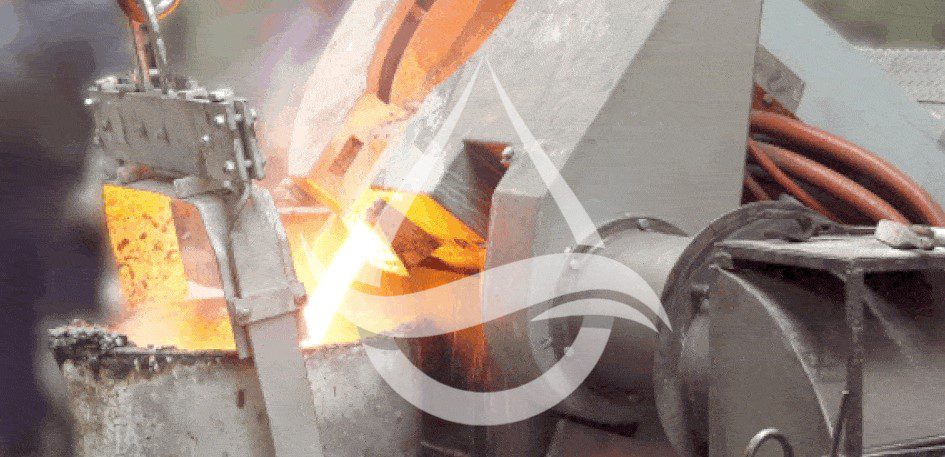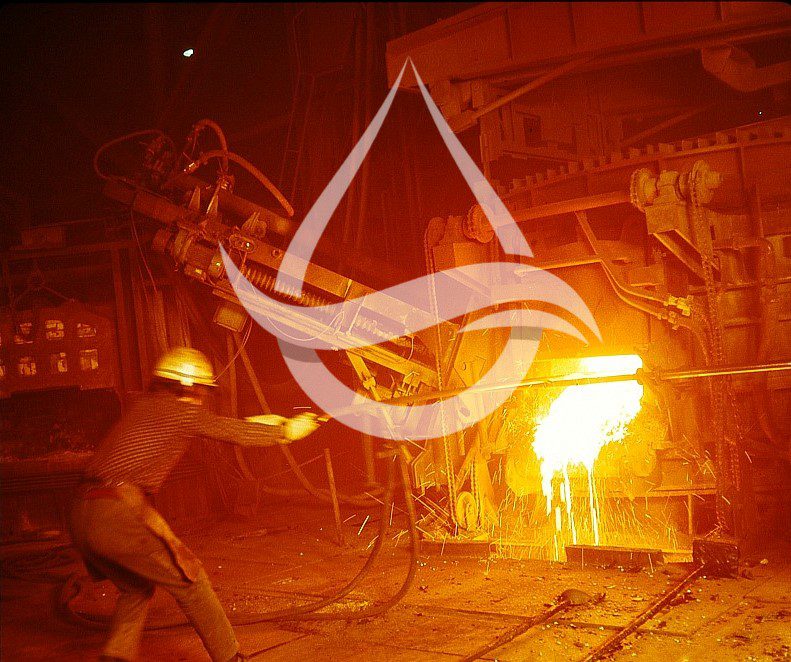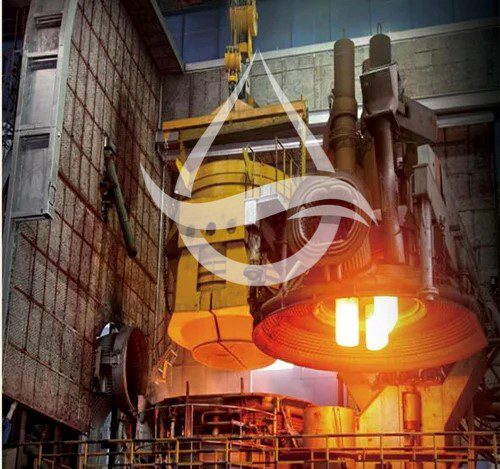Introduction to Open Bottom Inductive Furnaces
Open bottom Inductive furnaces have revolutionized various industrial processes by utilizing electromagnetic induction to generate high levels of heat. Among the different types of inductive furnaces, open bottom inductive furnaces have gained significant attention for their unique design and exceptional performance. This article aims to provide a comprehensive understanding of open bottom inductive furnaces and their application in conjunction with olivine sand.
Additionally, it will delve into the properties and benefits of olivine sand, exploring how it enhances the heat transfer and refractory performance within these furnaces. Furthermore, maintenance practices, best practices, and future trends related to open bottom inductive furnaces and olivine sand usage will be discussed. By the end of this article, readers will have a thorough knowledge of these remarkable furnaces and the integral role that olivine sand plays in optimizing their efficiency and effectiveness.
?What are Inductive Furnaces
When you hear the word “furnace,” you might picture a traditional brick oven used for heating or melting materials. Well, inductive furnaces take things up a notch by using electromagnetic induction to achieve high temperatures. These advanced furnaces are widely used in various industries, including metal casting, foundries, and even laboratories.
Overview of Open Bottom Inductive Furnaces
Now, let’s turn our attention to a specific type of inductive furnace – the open bottom inductive furnace. As the name suggests, these furnaces have an open bottom design, allowing for easy pouring and extraction of materials. The open bottom feature makes them particularly suitable for applications that require continuous casting or rapid material changes.
Understanding the Working Principle of Inductive Furnaces
Induction Heating in Furnaces
Before diving into open bottom inductive furnaces, it’s essential to grasp the concept of induction heating. Induction heating involves the generation of heat within a conductive material using an alternating electromagnetic field. The material placed inside the furnace, such as metal, is heated by the electromagnetic waves induced by electrical currents running through a coil.
Inductive Furnace Components and Operation
Now that the basic principle is clear, let’s take a peek inside an inductive furnace. It typically consists of an induction coil, which conducts the electrical currents, and a crucible to hold the material being melted or heated. The coil creates a magnetic field that induces currents within the conductive material, resulting in rapid and efficient heating. The open bottom design of these furnaces facilitates the controlled pouring and removal of materials.
Exploring the Benefits and Applications of Open Bottom Inductive Furnaces
Advantages of Open Bottom Inductive Furnaces
Open bottom inductive furnaces offer several advantages that make them a popular choice in various industries. Firstly, their open bottom design allows for quick and efficient material changes, reducing downtime and increasing productivity. Additionally, the precise temperature control and uniform heating provided by inductive furnaces contribute to high-quality casting and melting processes.
Common Applications of Open Bottom Inductive Furnaces
Open bottom inductive furnaces find applications in a wide range of industries. They are commonly used in metal casting processes, such as continuous casting and investment casting, thanks to their ability to handle rapid material changes. These furnaces also play a crucial role in the production of specialty metals, as well as in laboratories for research and development purposes.
An In-Depth Look at Olivine Sand and Its Properties
Introduction to Olivine Sand
Now that we understand open bottom inductive furnaces, let’s focus on a key material used in these furnaces – olivine sand. Olivine sand is a type of mineral sand composed primarily of magnesium iron silicate. Its unique combination of high melting point, low thermal expansion, and excellent refractory properties makes it an ideal choice for use in inductive furnaces.
Key Properties of Olivine Sand
Olivine sand possesses several properties that contribute to its effectiveness as a refractory material. Firstly, its high melting point allows it to withstand extreme temperatures inside the furnace without losing its structural integrity. Additionally, olivine sand has low thermal expansion, meaning it can resist thermal shock and maintain its shape under rapid temperature changes. These properties, coupled with its natural abundance, make olivine sand a valuable component in open bottom inductive furnaces.
Olivine Sand as an Essential Component in Open Bottom Inductive Furnaces
Open Bottom Inductive Furnaces (OBIF) are a crucial part of many industrial processes, particularly in the metallurgical and foundry industries. These furnaces rely on the use of Olivine Sand as an essential component for their efficient operation.
Role of Olivine Sand in Heat Transfer and Refractory Lining
Olivine Sand plays a vital role in the heat transfer process within OBIFs. Due to its unique mineral composition, Olivine Sand has excellent thermal conductivity properties, allowing it to efficiently transfer heat within the furnace. This contributes to faster and more uniform melting of metals, resulting in increased productivity.
Moreover, Olivine Sand is often used in the refractory lining of OBIFs. The refractory lining acts as a protective barrier between the intense heat of the furnace and the surrounding environment. Olivine Sand’s high melting point and resistance to thermal shock make it an ideal material for this purpose. It helps to maintain the integrity of the refractory lining, reducing the need for frequent repairs and ensuring the longevity of the furnace.
Olivine Sand’s Impact on Melting Efficiency and Metal Quality
In addition to its role in heat transfer and refractory lining, Olivine Sand also has a significant impact on the melting efficiency and quality of the metal produced in OBIFs.
Olivine Sand’s high thermal conductivity allows for more efficient heat transfer from the inductor to the metal charge, facilitating a faster melting process. This increased efficiency leads to reduced energy consumption and shorter production cycles, resulting in cost savings for manufacturers.
Furthermore, Olivine Sand’s chemical properties contribute to the production of high-quality metal. It has a low reactivity with molten metals, minimizing the formation of impurities and ensuring cleaner, purer metal. This is particularly crucial in industries where high-quality alloys or precise metal compositions are required.
The Role of Olivine Sand in Enhancing Heat Transfer and Refractory Performance
The use of Olivine Sand in OBIFs goes beyond its basic functionalities. It also plays a crucial role in enhancing heat transfer efficiency and improving the performance of refractory linings.
Olivine Sand’s Conductivity and Heat Transfer Properties
Olivine Sand exhibits remarkable conductivity and heat transfer properties, which significantly contribute to the overall performance of OBIFs. Its high thermal conductivity ensures that heat is efficiently distributed throughout the furnace, promoting uniform melting and reducing hotspots. This not only improves the productivity of the furnace but also helps to maintain consistent metal quality.
Improving Refractory Lining Lifespan with Olivine Sand
The refractory lining in open bottom inductive furnaces is subject to extreme heat and thermal cycling, which can cause wear and deterioration over time. Olivine Sand, with its excellent resistance to thermal shock and high melting point, helps to extend the lifespan of the refractory lining. By reducing the frequency of repairs and replacements, Olivine Sand contributes to cost savings and minimizes downtime, allowing for uninterrupted production.
7. Maintenance and Best Practices for Open Bottom Inductive Furnaces Using Olivine Sand
To ensure the optimal performance of OBIFs and the effective utilization of Olivine Sand, proper maintenance and adherence to best practices are essential.
Cleaning and Inspecting Open Bottom Inductive Furnaces
Regular cleaning and inspection of OBIFs are crucial to prevent buildup of impurities and maintain the efficiency of the furnace. This involves removing any accumulated debris, residues, or slag that may hinder heat transfer and affect the quality of the metal. Additionally, periodic inspections help to identify any signs of wear or damage to the refractory lining, allowing for timely repairs or replacements.
Proper Handling and Storage of Olivine Sand
Olivine Sand should be handled and stored with care to ensure its effectiveness and longevity. It is important to protect the sand from moisture, as prolonged exposure can lead to degradation and diminished performance. Proper packaging, sealed containers, and appropriate storage conditions, such as a dry and controlled environment, are essential for preserving the quality of the Olivine Sand.
Future Trends and Innovations in Open Bottom Inductive Furnaces and Olivine Sand Usage
The field of open bottom inductive furnaces and Olivine Sand usage continues to evolve, with several exciting future trends and innovations on the horizon.
Advancements in Open Bottom Inductive Furnace Technology
Manufacturers are constantly striving to enhance the efficiency and performance of OBIFs. This includes advancements in furnace design to optimize heat transfer, improve energy efficiency, and reduce environmental impact. Innovations such as advanced control systems, automated processes, and predictive maintenance technologies hold great promise for the future of OBIFs.
8.2 Evolving Applications and Development of Olivine Sand
As industries evolve and demands shift, the applications and development of Olivine Sand are also expanding. Researchers are exploring new ways to utilize Olivine Sand in areas such as renewable energy, waste management, and environmental remediation. Its unique properties make it a versatile material with potential applications beyond the traditional metal melting processes, opening up exciting possibilities for its future use.
In conclusion, open bottom inductive furnaces, coupled with the use of olivine sand, offer a highly efficient and effective solution for various industrial heating processes. The unique design of these furnaces, combined with the exceptional properties of olivine sand, enhances heat transfer, improves refractory performance, and ultimately contributes to better quality and productivity. As industries continue to evolve, it is expected that advancements in open bottom inductive furnace technology and the development of olivine sand will further optimize these systems. By staying informed about the latest trends and adopting best practices, industries can maximize the benefits of open bottom inductive furnaces and olivine sand, ensuring efficient and sustainable operations for years to come.
FAQ
1. What is the main advantage of using open bottom inductive furnaces?
Open bottom inductive furnaces offer improved accessibility for loading and unloading materials compared to traditional closed designs. This allows for easier handling of molten metals or alloys and facilitates efficient and quick process changes or maintenance.
2. How does olivine sand enhance the performance of open bottom inductive furnaces?
Olivine sand plays a crucial role in open bottom inductive furnaces by enhancing heat transfer and improving refractory lining performance. With its high thermal conductivity and exceptional refractory properties, olivine sand ensures efficient heat distribution, reduces hotspots, and extends the lifespan of the refractory lining.
3. Can open bottom inductive furnaces using olivine sand be used for specific applications?
Yes, open bottom inductive furnaces using olivine sand find applications across various industries, including metal melting, foundries, and metalworking processes. These furnaces are particularly suitable for processes that require precise temperature control, improved energy efficiency, and high-quality metal output.
4. Are there any specific maintenance practices for open bottom inductive furnaces using olivine sand?
Yes, regular cleaning, inspection, and proper storage of olivine sand are essential for the optimal performance of open bottom inductive furnaces. Additionally, adhering to best practices for furnace operation, such as monitoring and controlling operating parameters, will help ensure efficient and safe furnace operation while maximizing the benefits of olivine sand usage.




